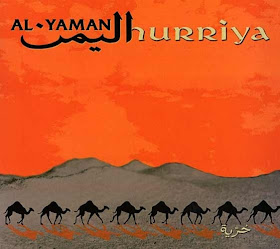
1) El apasionado
Son huasteco; Región huasteca, estado de Puebla.
Violín (I), Quinta huapaguera (II), J arana huasteca (IV), Voces (I y IV).
2) Danza del fuego
Danza ritual de concheros; Distrito Federa l.
Flautas de barro (I y VI), Silbato de barro (III), Huéhutl (VII), Teponzatlis (II y V), Ayoyotes (III).
3) Danzas de chinelos
Danza de carnaval; Estado de Morelos.
Clarinete (VI), Saxofones (V), Trompeta (IV), Tambora, Tarola y Plati llos (VII).
4) El buscapiés
Son jarocho; Región jarocha, estado de Veracruz.
Arpas jarocha (V), Requinto jarocho (I), Jaranas jarochas (I y IV), Voces (I y IV).
5) Pichito amoroso
Jarana 6/8; Estado de Campeche.
Clarinetes (VI), Saxofones (V y VI), Trompeta (IV), Bajo e léctrico (III), Timbales y Güiro (I).
6) México típico
Polka; Estado de Nuevo León.
Acordeón de Botones (I), Saxofón (V), Bajo sexto (II), Bajo eléctrico (III), Batería (VII)
7) La Cecilia
Pirecua; Región purhépecha, estado de Michoacán.
Violines (I), Vihuela (II), Trompeta (IV).
8) Danza de parachicos
Danza; Estado de Chiapas.
Marimba (I), Bajo eléctrico (III), Batería (VII), Flauta de carrizo (V)
9) Que re vas te vas
Gusto; Tierra caliente estado de Guerrero.
Violín (I y IV), Guitarra (III), Contrabajo (III), Tamborita (V), Voces (I y IV)
10) Cuanegros
Danzas; Región huasteca, estado de San Luis Potosí.
Violin (I), Quinta huapanguera (II), Jarana huasteca (IV)
11) La revolcada
Polka; Estado de Coahuila.
Acordeón de botones (I), Bajo sexto (II)Bajo eléctrico (II), Batería (VII)
12) Las chiapanecas
Son; Estado de Chiapas.
Marimba (I y X), Contrabajo (VIII), Batería (IX).
)
13) La majagua
Son de potorrico: Estado de Nayarit.
Violines (I y IV), Vihuela (II), Guitarrón (III), Batería (VII).
14) El chaverán
Zapateado; Estado de de Baja California Norte.
Violín (IV), Acordeón de botones (1), Bajo sexto (11), Bajo eléctrico (111), Batería (VII).
15) La bamba
Son jarocho; Región jarocha, estado de Veracruz.
Arpa (IX), Requinto jarocho (X), Jaranas Jarochas (I y VIII), Voces (V, VII y X).
16) Danzas de cuchillos
Danza; Estado de Tlaxcala.
Violín (I), Guitarra (V).
17) La rosita
Son arribeño; Sierra gorda, estado de Querétaro.
Violines (I y IV), Quinta huapanguera, Vihuela y voz (V), Guitarrón (III).
18) La culebra
Son jalisciense; Estado de Jalisco.
Violines (I), Vihuela y Guitarra (II), Guitarrón (III), Trompetas (IV).
19) El bejuquito y el querreque
Sones huastecos; Región huasteca, estado de Veracruz.
Violín (X), Quinta huapanguera (II), Jarana huasteca (VII), Voces (VII y X).
(I) Carlos Barajas
(II) Alejandro Garcia
(III) Alejandro Montaño
(IV) Arturo Bosques
(V) Enrique Hernández
(VI) Jesús Getino
(VII) Gustavo Camarillo
(VIII) Efrén Vargas
(IX) Raúl Reyes
(X) Alejandro Flores
mp3 320 kbps
Full Booklets






























